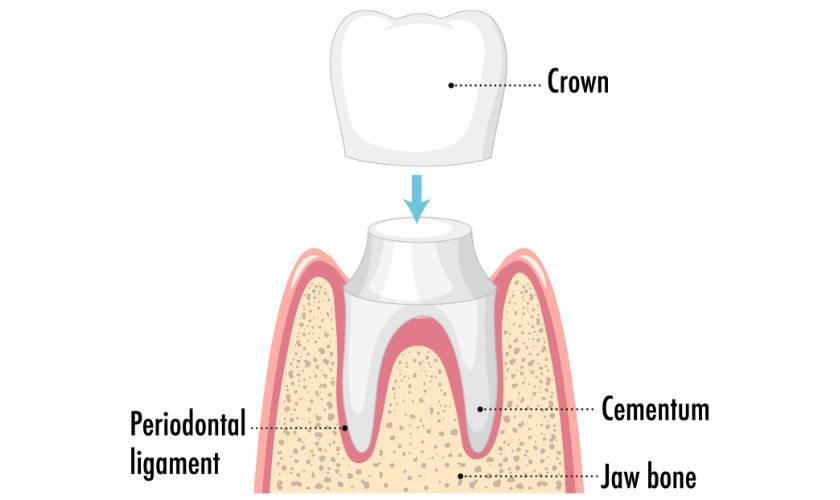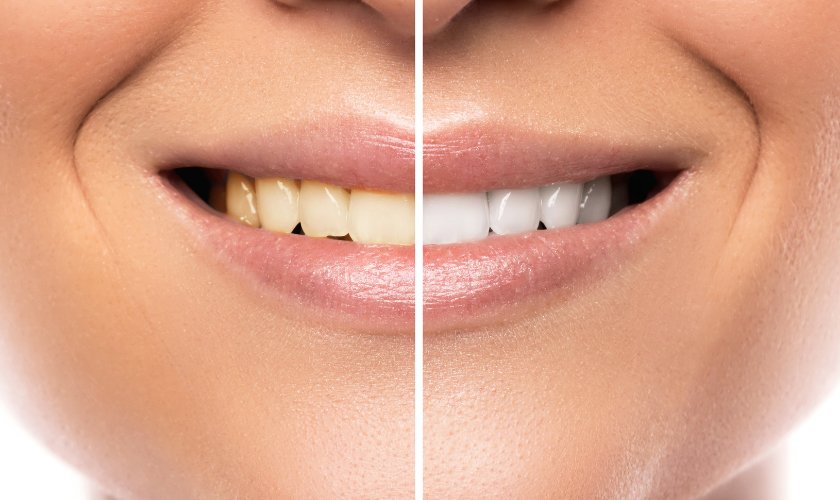
Dental crowns play a crucial role in restoring damaged teeth, providing strength, protection, and enhancing aesthetics. Among the various materials used for crowns, ceramic crowns stand out for their natural appearance and biocompatibility. In this article, we will explore the world of ceramic dental crowns, exploring their types, advantages, disadvantages, and considerations for choosing them.
What are Dental Crowns?
Dental crowns, prosthetic tooth-like items, over a tooth to restore its shape, size, strength, and appearance. They attach these crowns to the visible portion of a tooth above the gum line, offering protection and support to damaged or weakened teeth..
Importance of Dental Crowns
Dental crowns serve multiple purposes, including:
- Strengthening weakened teeth due to decay or fractures
- Restoring the shape, size, and function of damaged teeth
- Improve the appearance of the fractured or discolored teeth
- Supporting dental bridges
- Covering dental implants
Types of Dental Crowns
Various materials make up dental crowns, each with its own set of advantages and disadvantages. The common types include:
- Ceramic Crowns: Ceramic Crowns are crafted from dental porcelain, a material closely resembling natural tooth enamel in appearance, they are also known as all-ceramic or porcelain crowns. These crowns are popular for their aesthetic appeal, blending seamlessly with natural teeth.
- Porcelain-fused-to-Metal Crowns: Porcelain-fused-to-metal (PFM) crowns consist of a metal substructure covered with porcelain. While they offer a balance between strength and aesthetics, the metal underlying the porcelain may sometimes show at the gum line, affecting aesthetics.
- Zirconia Crowns: Zirconia crowns are made from zirconium dioxide, are known for their strength and durability as they utilize a biocompatible material.
- These crowns exhibit natural-looking aesthetics and are suitable for both front and back portion of teeth.
Exploring Ceramic Dental Crowns

Composition and Characteristics
Ceramic crowns are crafted from dental porcelain, a ceramic material that mimics the natural color and translucency of tooth enamel. They are custom-made to match the shade, shape, and size of the patient’s natural teeth, ensuring a seamless blend with the smile.
Advantages of Ceramic Crowns
- Aesthetic appeal: Ceramic crowns closely resemble natural teeth, providing a seamless smile.
- Biocompatibility: Porcelain is well-tolerated by the body, reducing the risk of allergic reactions.
- Stain resistance: Ceramic crowns are highly resistant to staining, maintaining their brightness over time.
- Conservative preparation: Minimal tooth structure removal is required for placing ceramic crowns, preserving healthy tooth tissue.
Disadvantages of Ceramic Crowns
- Fragility: Ceramic crowns may be prone to chipping or fracturing under excessive force.
- Wear on opposing teeth: Porcelain crowns may cause wear on natural teeth when in contact.
- Cost: Ceramic crowns tend to be more expensive compared to other materials.
Different Types of Ceramic Dental Crowns
Traditional Ceramic Crowns
Traditional ceramic crowns are crafted entirely from dental porcelain, offering excellent aesthetics and biocompatibility. They are suitable for restoring front teeth where aesthetics are a priority.
Porcelain-fused-to-Zirconia Crowns
Porcelain-fused-to-zirconia (PFZ) crowns combine the strength of zirconia with the aesthetic appeal of porcelain. They are ideal for restoring both front and back teeth, providing durability and natural aesthetics.
Lithium Disilicate Crowns
Lithium disilicate crowns are a type of ceramic crown known for their high strength and durability. They are suitable for patients with a strong bite or those requiring crowns for posterior teeth.
Zirconia-Reinforced Ceramic Crowns
Zirconia-reinforced ceramic crowns combine the strength of zirconia with the natural appearance of ceramic. They offer enhanced durability and are suitable for patients with bruxism or heavy biting forces.
Factors to Consider When Choosing Ceramic Crowns
Aesthetics
The ability of ceramic crowns to closely mimic natural teeth makes them an excellent choice for visible areas of the mouth. Patients can choose the shade, shape, and size of their crowns to achieve the desired aesthetic result.
Durability
While ceramic crowns offer good strength and longevity, factors such as oral habits and biting forces can affect their durability. Patients should discuss their lifestyle and habits with their dentist to ensure the longevity of their crowns.
Affordability
The cost of ceramic crowns may vary depending on factors such as the dental laboratory, the complexity of the case, and the dentist’s expertise. Patients should inquire about the cost and explore financing options if necessary.
Biocompatibility
Ceramic crowns are biocompatible, making them suitable for patients with metal allergies or sensitivities. They do not contain any metal components, reducing the risk of adverse reactions.
Procedure for Getting Ceramic Dental Crowns
The process of getting ceramic dental crowns typically involves the following steps:
- Consultation and Assessment: During the initial consultation, the dentist examines the patient’s oral health and discusses treatment options. X-rays may be taken to assess the condition of the affected tooth and surrounding structures.
- Tooth Preparation: To prepare the tooth for the crown, the dentist removes a small amount of enamel from the tooth’s surface. This creates space for the crown to fit securely over the tooth without altering its overall shape or size.
- Impressions and Fabrication: After preparing the tooth, the dentist takes impressions of the tooth and surrounding teeth to create a custom-made crown. Skilled technicians at a dental laboratory then fabricate the crown according to the dentist’s specifications using the impressions.
- Placement and Adjustment: After preparing the tooth, the dentist places the crown over it and checks for fit and aesthetics. The dentist makes any necessary adjustments to ensure proper alignment and bite. Once satisfied, the dentist permanently bonds the crown to the tooth using dental cement.
Aftercare and Maintenance of Ceramic Crowns
- Oral Hygiene Practices: Maintaining good oral hygiene is essential for the longevity of ceramic crowns. Patients should brush their teeth twice a day, floss daily, and use antimicrobial mouthwash to prevent plaque buildup and gum disease.
- Regular Dental Check-ups: Patients should visit their dentist in Reno regularly for check-ups and professional cleanings. During these visits, the dentist can assess the condition of the crowns and address any issues before they escalate.
- Avoiding Habits that may Damage Crowns: Patients should avoid habits such as chewing on hard objects, biting fingernails, or using teeth as tools, as these can damage or dislodge ceramic crowns. Wearing a mouthguard during sports activities can also help protect the crowns from trauma.
Ceramic dental crowns offer an excellent combination of aesthetics, biocompatibility, and durability, making them a popular choice for restoring damaged or decayed teeth. By exploring the different types of ceramic crowns and considering factors such as aesthetics, durability, and affordability, patients can make informed decisions about their dental treatment.
New Patients & Emergency Appointments Welcome!





